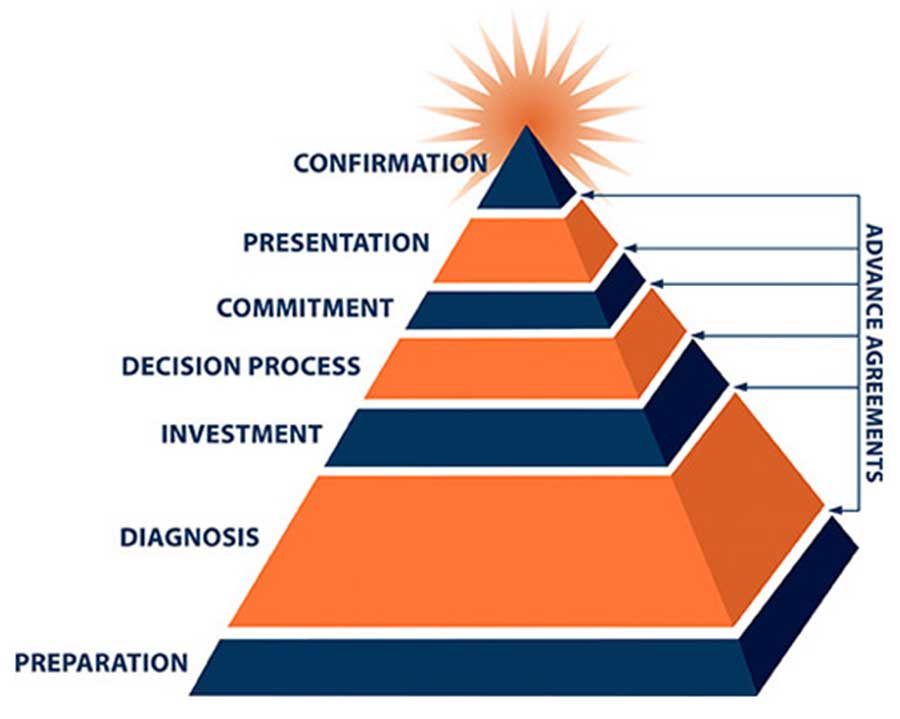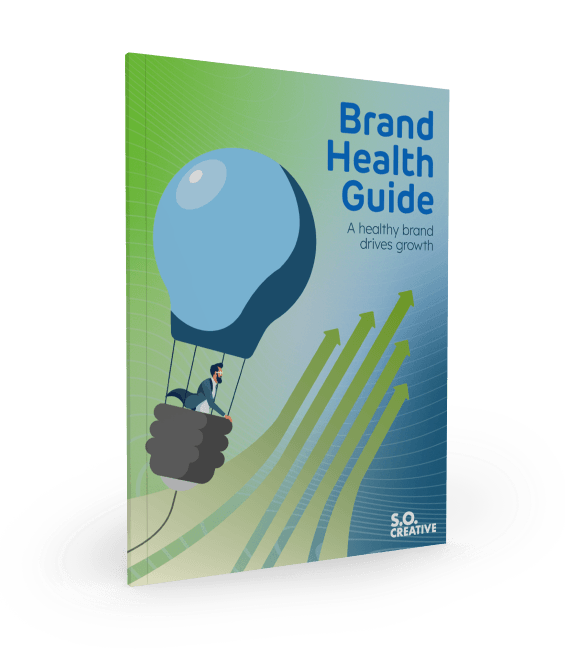Try not to think of the current economic downturn as the end of days but rather as a natural economic disruption (albeit a large one). The economy has a history of naturally expanding and contracting. If you’ve lived long enough, you’ve been through at least one large economic upset, such as the 2008 financial crisis. Which means you know that times like these require ingenuity, perseverance and teamwork.
To survive this disruption, you need to focus on retaining the clients you do have and training your sales team on how best to sell in this new socially distant environment. Both require the same thing: a concise and powerful message that clearly communicates your value. Your clients and prospects need to understand and believe that what you’re selling will improve their sales efficiency and help their business survive in this economy.
Selling Effectively and Efficiently During Social Distancing
Should you be making sales calls during a crisis? Yes, absolutely. This is a triggering event that should prompt contact with all your prospects.
But what about social distancing?! Yes, social distancing has thrust us into “the new normal” of working remotely and video meetings; all this change can create a lot of discomfort and anxiety. But you have to ask yourself: Is it “the new normal,” or is this where things were headed all along?
With advancements in technology, I’m sure there have been a few occasions where you’ve even considered transitioning part (or all) of your team to a remote workforce to reduce the overhead cost of workspace.
At the end of the day, the sales process is basically the same; it’s just being employed through a new medium. Which means you’ll need to make some adjustments to optimize your sales process for social distancing.
Evaluating Your Current Sales Process
Whether you’re a CEO or a regional manager, you know that a successful business operates on a system of processes to increase efficiency, reduce mistakes and maximize effectiveness. The same is true when it comes to an effective sales team. For this discussion, let’s assume you already have a strong selling system in place, such as the Client Builder Selling Process outlined below.
The 7 Steps in the Client Builder Selling Process
These seven steps are held together by specific understandings between buyer and seller as to what will take place at each step in the process from initial contact to closing. Keep in mind that this process may need to be completed with each of the key decision makers on the prospect’s team.

- Preparation: Gather information about the market and individual prospects to aid in the qualifying process, as well as make the best possible impression during your initial sales call.
- Diagnosis: This step is where you identify your prospect’s “pain” — a compelling, personal reason for the prospect to acquire your product or service. Your job is to get at the root of what’s causing your prospect’s pain so you can provide the right solutions when it’s time to present. This is where you establish lines of communication and begin to build trust. It’s also where the sale is typically won or lost.
- Investment: This is where you determine the size of the opportunity. The goal is to determine if your prospect is willing and able to invest in the solutions required to fix the problems identified in the diagnosis step.
- Decision Process: Uncover the who, how, when, why and what of your prospect’s decision making process. This may seem simple, but it’s often overlooked and can lead to wasting time presenting to people who don’t have authority to make the final buying decision.
- Commitment: Before investing time and effort in creating proposals or presentations, you want to make certain that your prospect is committed. Will your prospect invest the necessary time, money and effort needed to gain your solution to the “pain” uncovered in the diagnosis step? And of equal importance, is your prospect committed to deciding on a solution in a timely manner?
- Presentation: This is where you deliver the proof your prospect needs to make a final decision and ask for that final decision. This is often the shortest step in the entire process, as the decision to buy is typically made before you arrive at this step.
- Confirmation: Your goal is to strengthen your agreement with the buyer and eliminate any lingering “buyer’s remorse.” You should also establish expectations for both parties and how any failure to meet those expectations will be handled.
3 Tips for Optimizing Your Sales Process Efficiency
Here are some tips for improving the efficiency of your sales process both during and after social distancing.
- Conduct LinkedIn Reconnaissance: LinkedIn can be a powerful tool for collecting pertinent information about your prospect. By adding the following steps to your preparation process, you can reduce the time it takes to build rapport.
- Connect with all key decision makers and team members who will participate in the initial meeting.
- Review their profiles and make note of any information you can use to build rapport during the meeting.
- Run a personality assessment with the Crystal Knows app to gain a better understanding of what motivates their decision making process, as well as preferred communication style and tone.
- Get to the “No”: Don’t waste time courting a prospect who isn’t the right fit. To help reduce wasted time, try and get to the “no” — if there is one — early on in the selling process. During one of your initial meetings, we suggest you say something like this while reviewing the agenda: “The objective of today’s meeting is to determine if my solutions can help reduce the pain points we discussed during our initial call. I would like to ask that you grant me the courtesy of your honesty. If at the end of this meeting, you feel my solutions are not the right fit, please let me know. I promise to return the favor, as I do not want to sell you the wrong solution.”
- Invest In Powerful, Consistent Sales Enablement Tools: This is important in any economy but holds even greater weight now. Your clients and prospects need to understand and believe that what you’re selling will help their business survive in this economic crisis. To make your sales team more efficient, you need to grease the wheels by consistently delivering a concise, powerful message that clearly communicates your value and cements your competitive position. Conduct an internal review of the following.
- Website: How long does it take a prospect to gain a clear understanding of your value proposition and brand differentiators? If it takes longer than 60 seconds, you’re making them work too hard.
- Marketing Communications: You can’t guarantee that a prospect will have engaged with all your marketing content, which means everything from your company brochure and e-blasts to your ad campaigns need to consistently reinforce the same overarching message.
- Sales Presentations: Be sure your sales team is equipped with the tools needed to be successful once they’ve qualified a prospect.
- Can every member of your sales team clearly communicate the value of your solutions?
- What does your sales deck look like? With remote video conferencing, it’s even harder to maintain your prospect’s attention. If the presentation is too long, your audience will tune out and start checking their email or text messages. Instead of getting lost in the details, focus on the core benefits.
What’s Your Competitive Positioning Message, and Is Everyone on Board?
Right now, your current clients and prospective clients are all looking for ways to reduce overhead costs, and prospects will have a hard time validating new expenses. Ask yourself these key questions:
- Can you tell them why they can’t afford to lose your products or services in this economy?
- Can your sales team effectively and consistently articulate that message?
- Does your service team consistently deliver on that promise?
If you can’t answer yes to these questions, it’s time to connect with the experts at S.O. Creative. Our team has over 100 years of collective experience developing strategic messaging that drives business for a wide range of B2B companies.
Do your clients know why they can’t afford to lose your services?
If you’re not sure, let us help. Connect with us today and let’s talk ideas that drive business!

